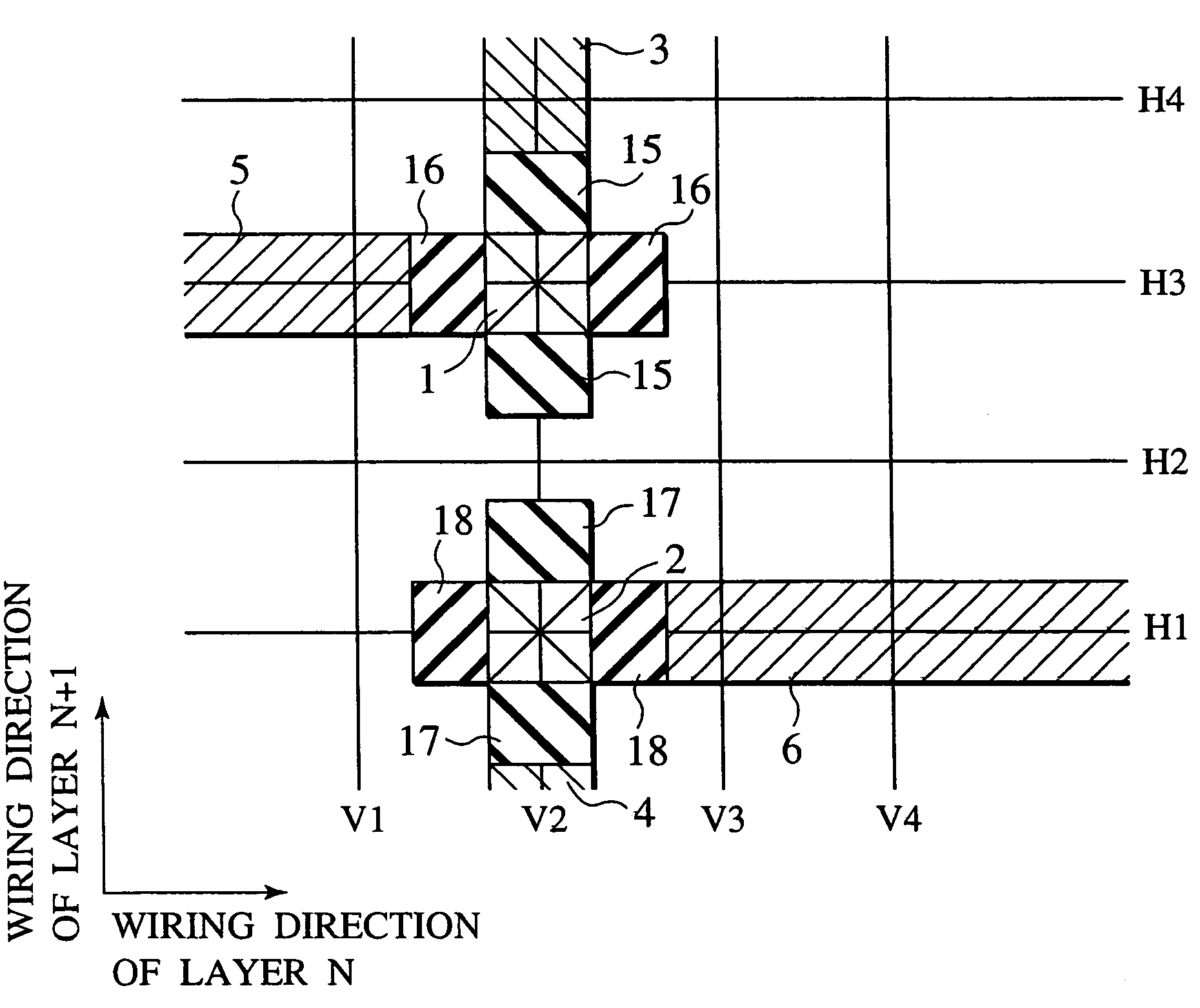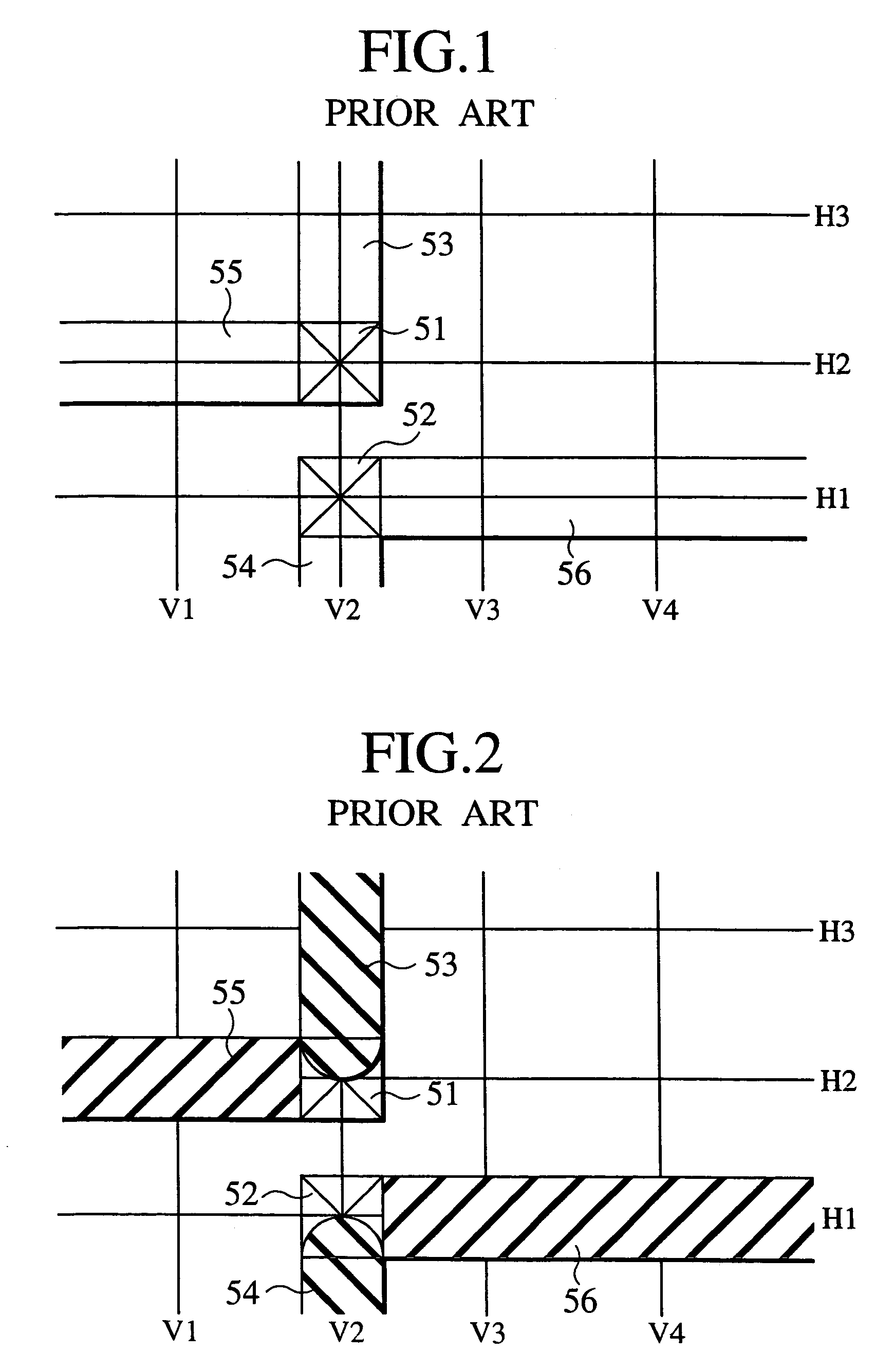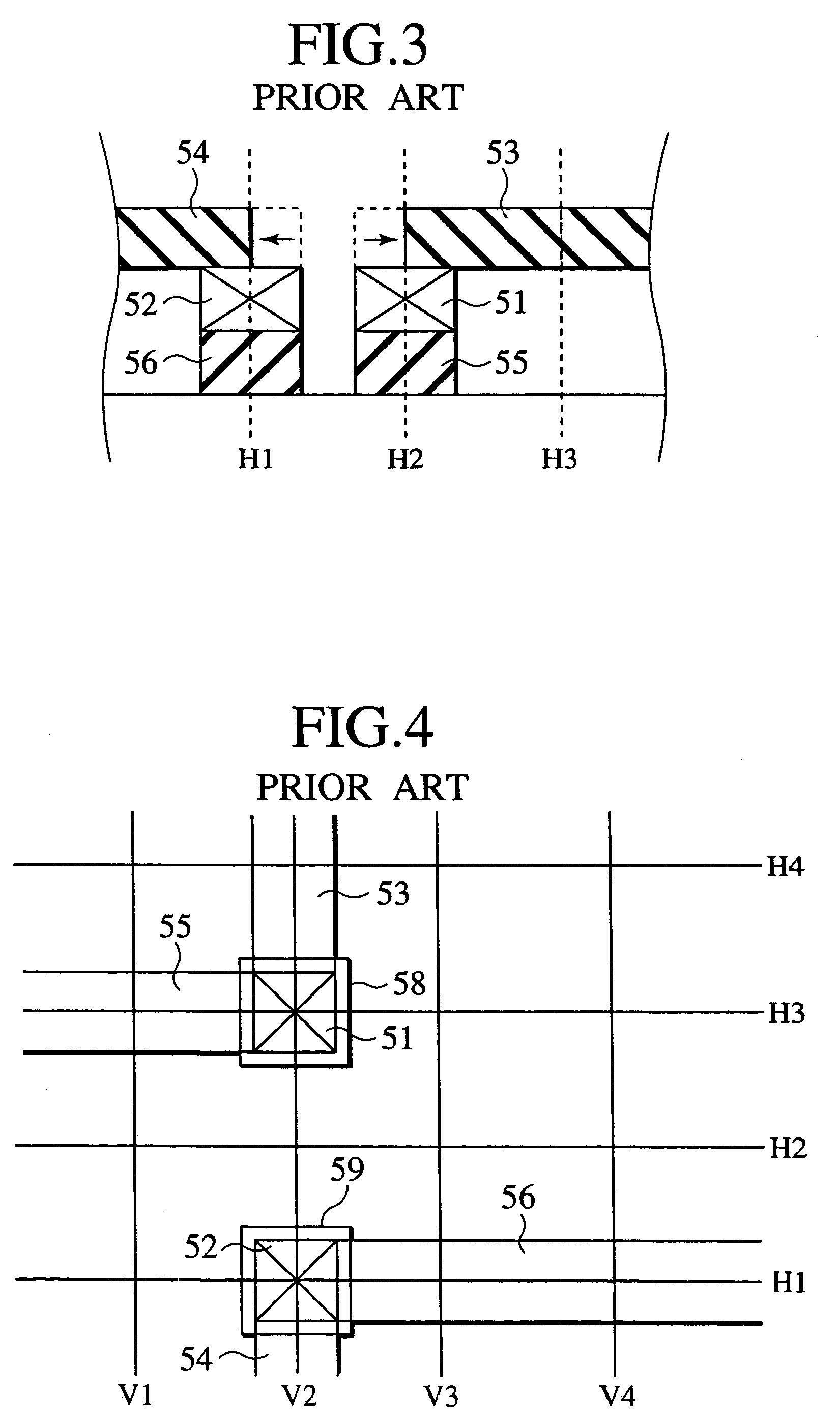Computer-readable recording medium storing semiconductor designing program for improving both integration and connection of via-contact and metal
a computer-readable and program-based technology, applied in the field of semiconductor devices, can solve the problems of deteriorating the integration of metal wires, small circuit patterns with problems, optical proximity effect, etc., and achieve the effect of minimizing contact defects and high integration
- Summary
- Abstract
- Description
- Claims
- Application Information
AI Technical Summary
Benefits of technology
Problems solved by technology
Method used
Image
Examples
first embodiment
[0056]FIG. 5 is plan view showing metal wires of a semiconductor device according to the first embodiment of the present invention. The semiconductor device has via-contacts 1 and 2, main wires 3 to 6, and extensions 7 to 10. An end of each main wire is connected to a corresponding via-contact. Each extension is in line with a corresponding main wire, is connected to an end of the main wire, and is extended beyond the via-contact to which the main wire is connected. The width of each extension is equal to or narrower than the width of the corresponding main wire.
[0057]Via-contacts are conductive plugs formed in an intermediate layer between wiring layers in a semiconductor device of multilayer wiring struggle, to electrically connect metal wires formed on the upper and lower wiring layers to each other. In FIG. 5, the via-contacts 1 and 2 are arranged on a grid that is used for a designing purpose. The distance between adjacent grid lines indicates a minimum distance by which adjace...
second embodiment
[0081]Unlike the first embodiment that ranges extensions in line with main wires, the second embodiment arranges extensions orthogonally to main wires. FIG. 12 is a plan view showing metal wires of a semiconductor device according to the second embodiment.
[0082]The semiconductor device of the second embodiment has X wiring layers where “X” is a natural number and “N” is any natal number that satisfies 01, 2), main wires (3 to 6) having ends connected to the via-contacts, and extension (15 to 18) orthogonally extending from the ends of the main wires beyond the via-contacts, the width of each extension being equal to or narrower than the width of a corresponding main wire.
[0083]The via-contacts 1 and 2 are formed in a layer N of the semiconductor device, the main wires 3 and 4 are formed in a layer N+1, and the main wires 5 and 6 are formed in the layer N. The via-contacts 1 and 2 and main wires 3 to 6 are the same as those of the first embodiment, and therefore, will not be explaine...
PUM
| Property | Measurement | Unit |
|---|---|---|
| width | aaaaa | aaaaa |
| contact resistance | aaaaa | aaaaa |
| distance | aaaaa | aaaaa |
Abstract
Description
Claims
Application Information
 Login to View More
Login to View More - R&D
- Intellectual Property
- Life Sciences
- Materials
- Tech Scout
- Unparalleled Data Quality
- Higher Quality Content
- 60% Fewer Hallucinations
Browse by: Latest US Patents, China's latest patents, Technical Efficacy Thesaurus, Application Domain, Technology Topic, Popular Technical Reports.
© 2025 PatSnap. All rights reserved.Legal|Privacy policy|Modern Slavery Act Transparency Statement|Sitemap|About US| Contact US: help@patsnap.com



